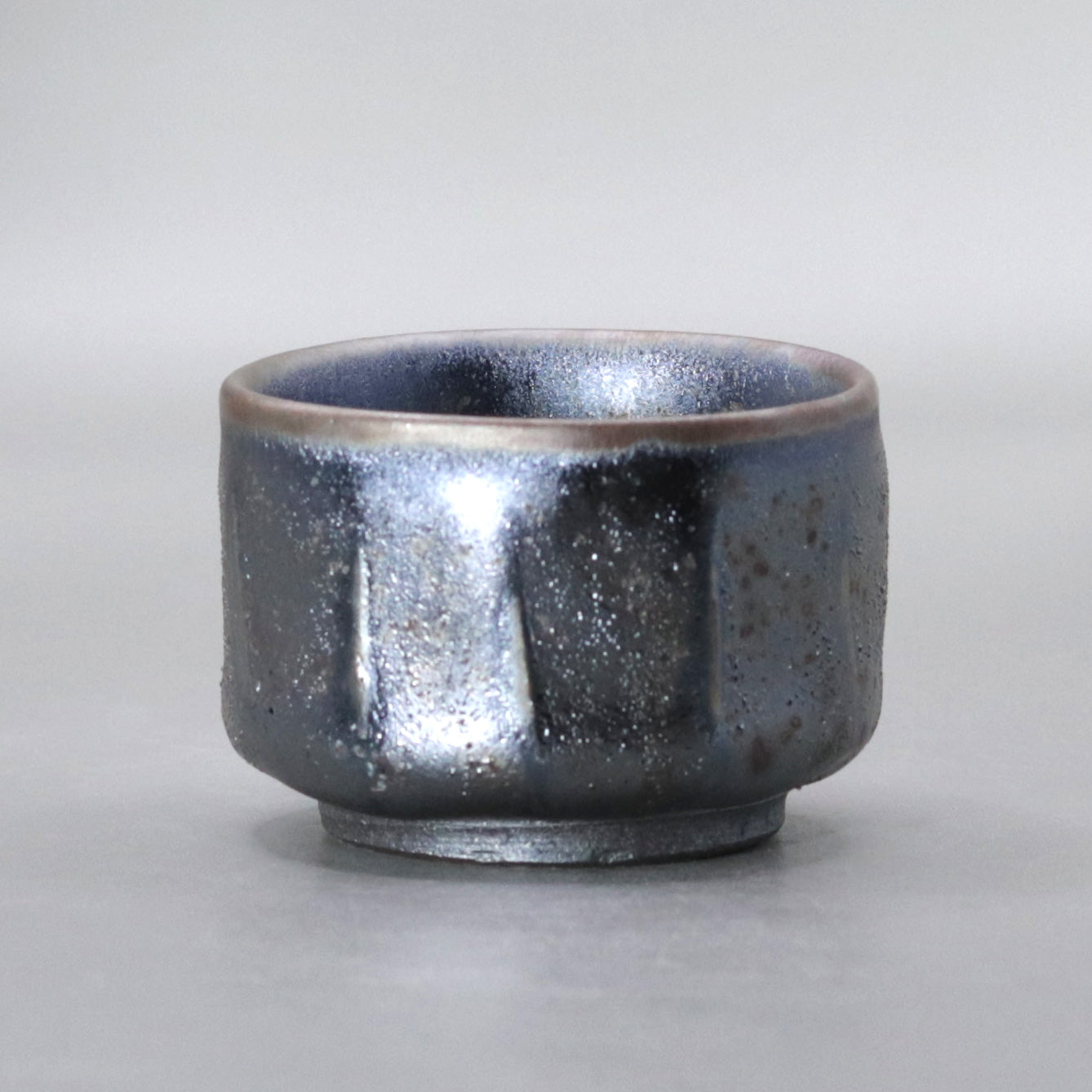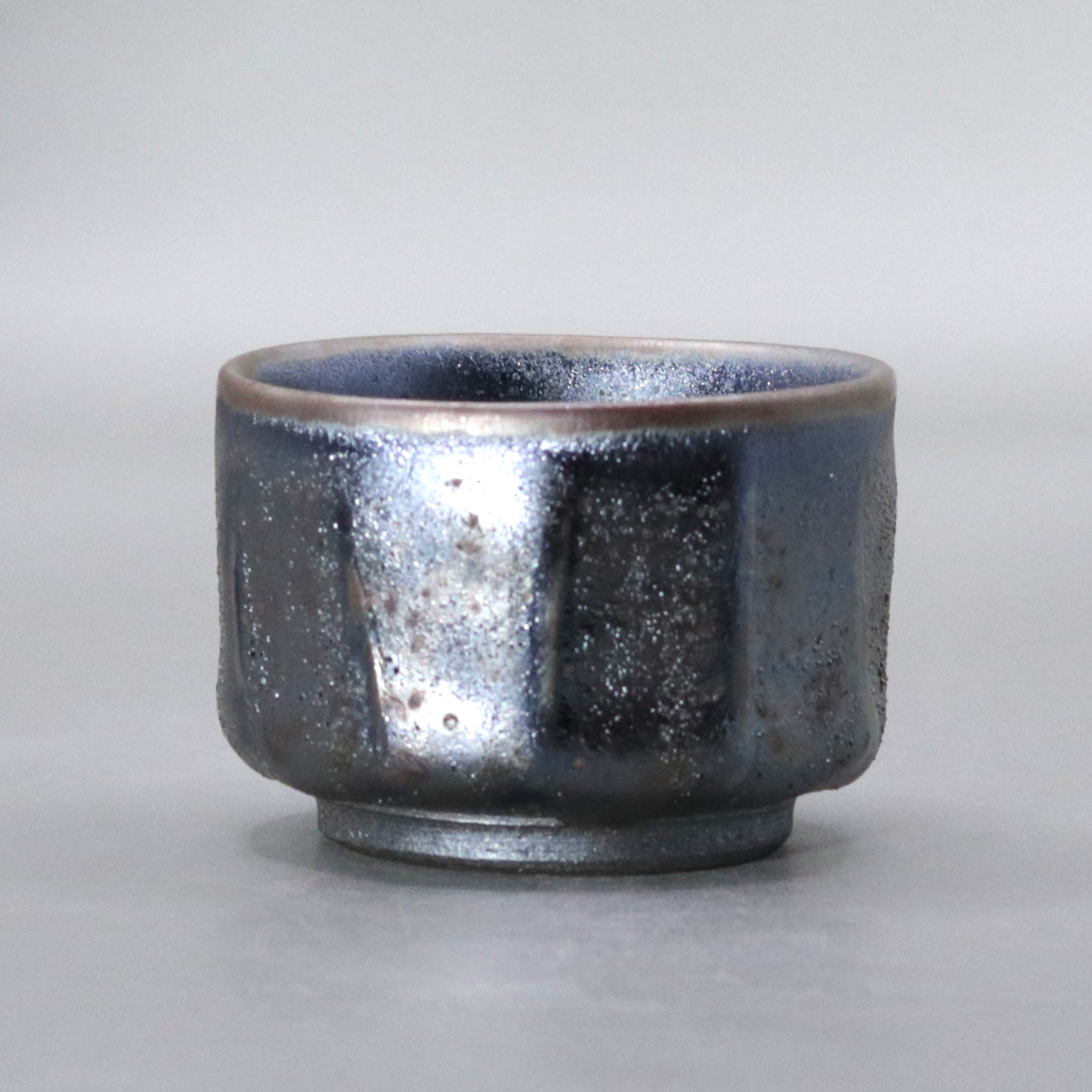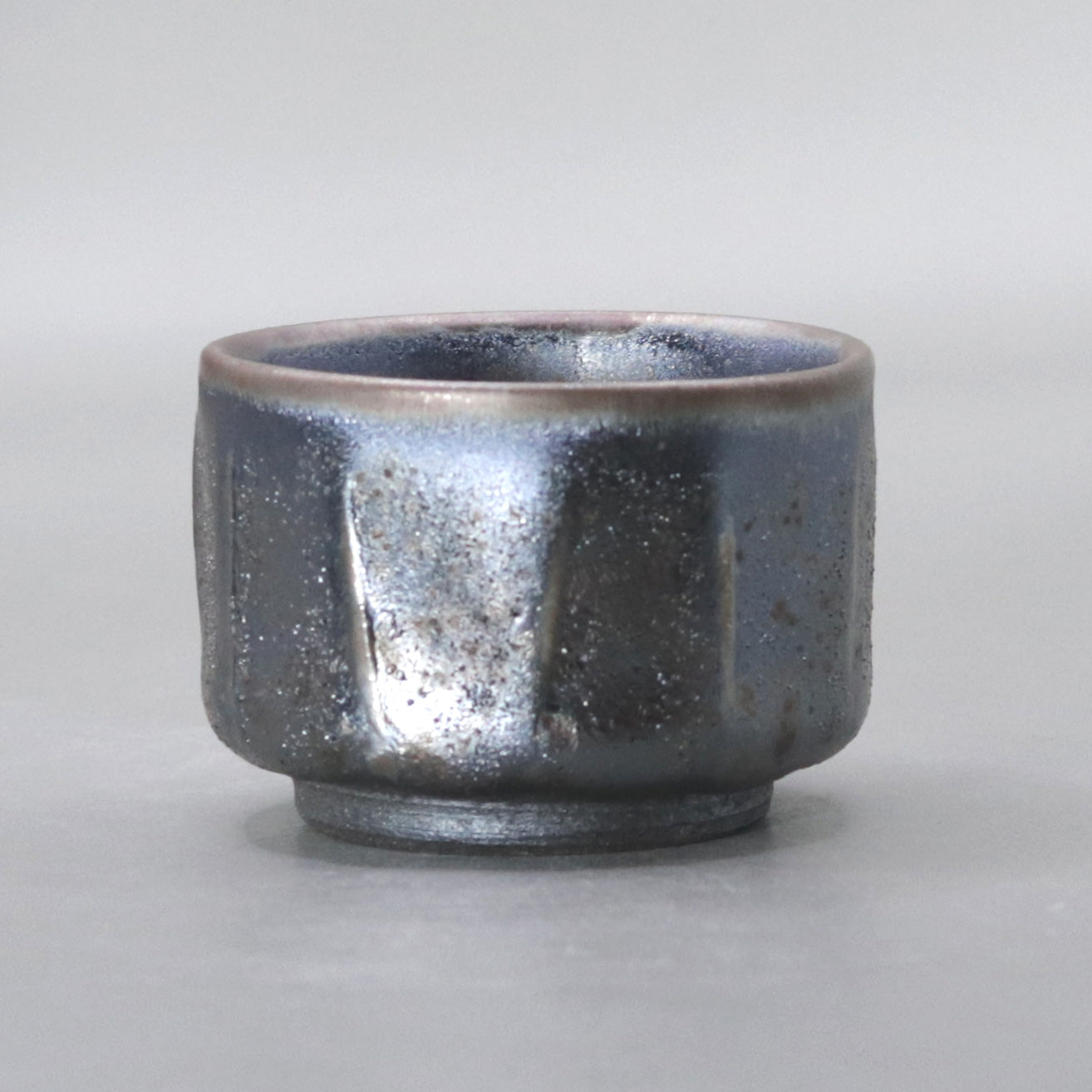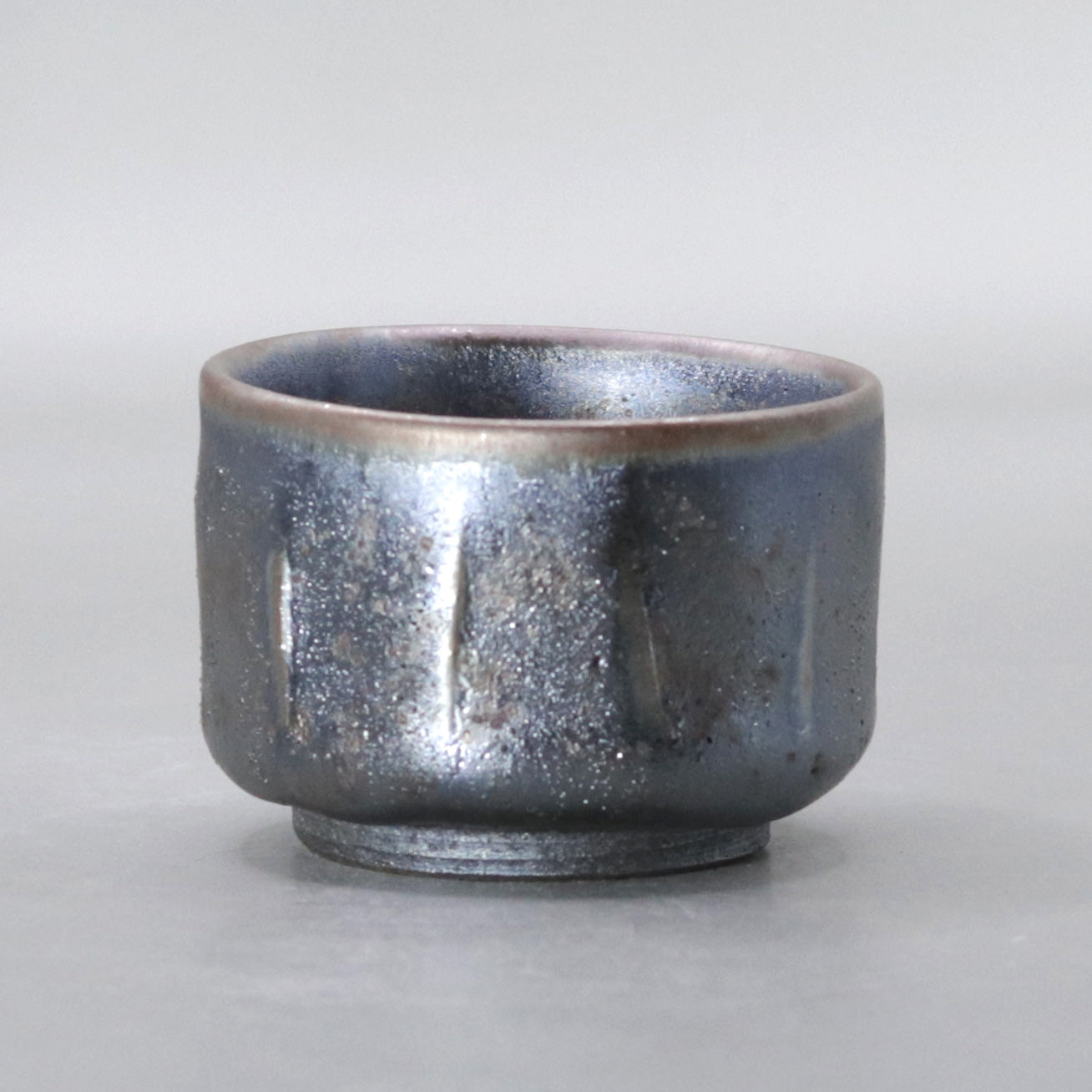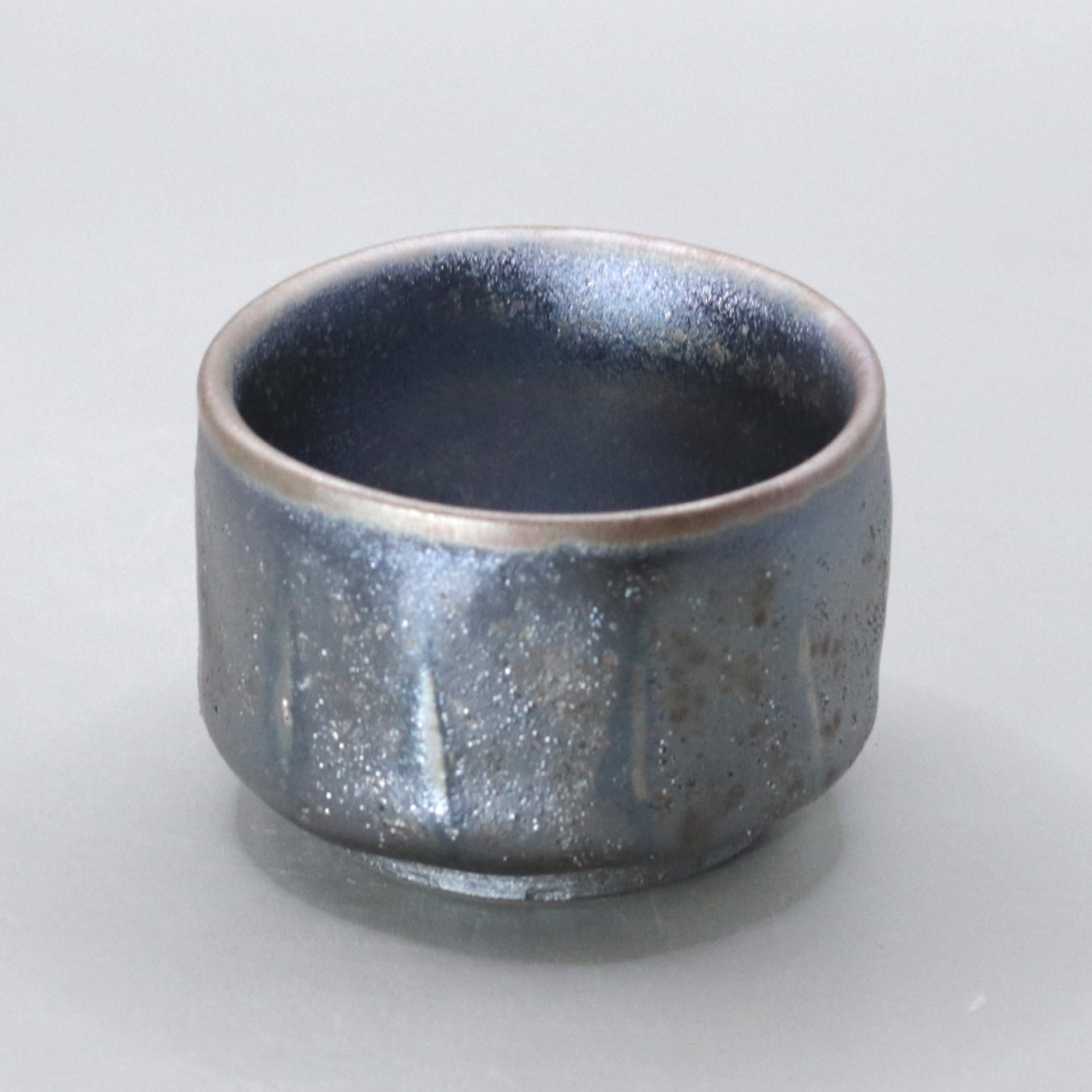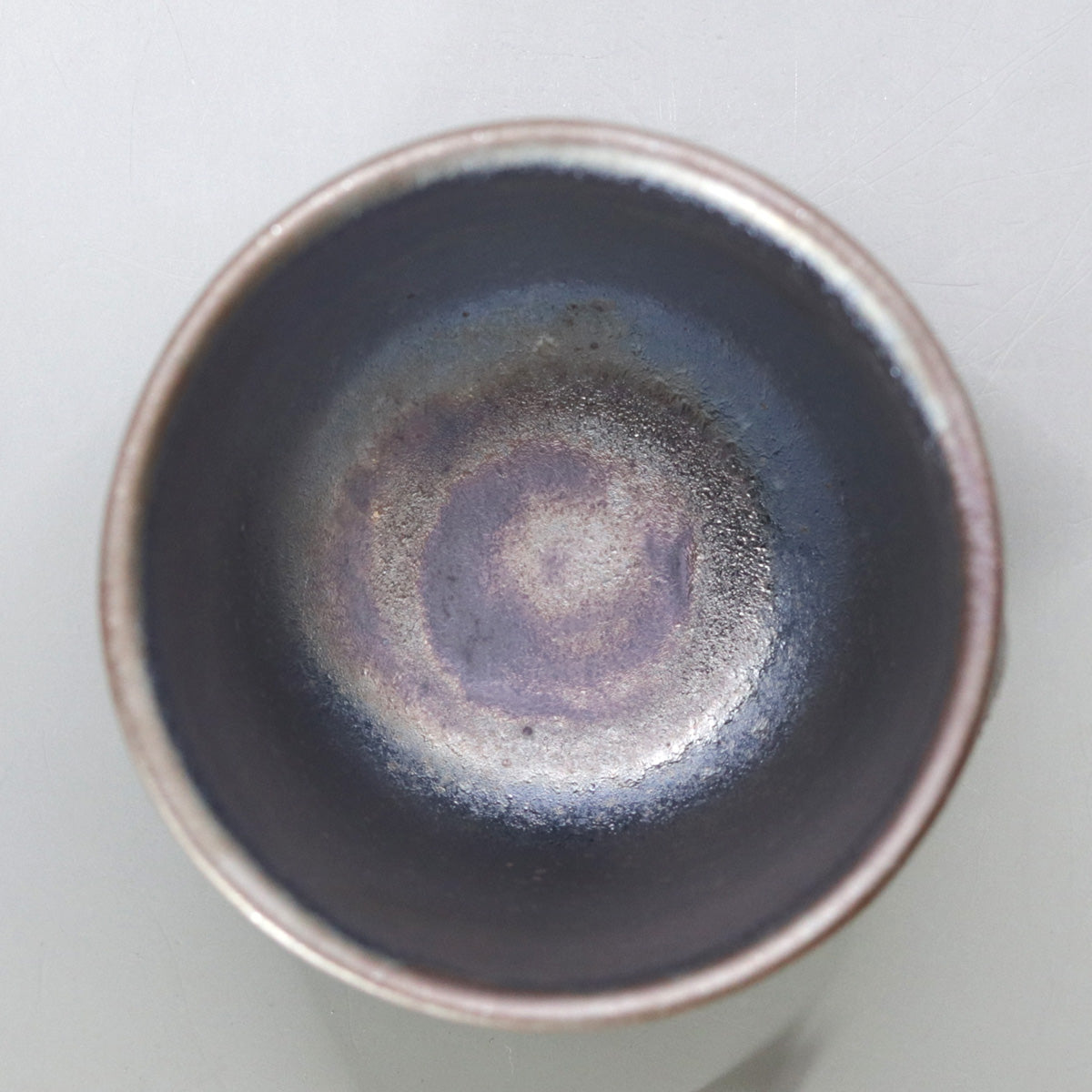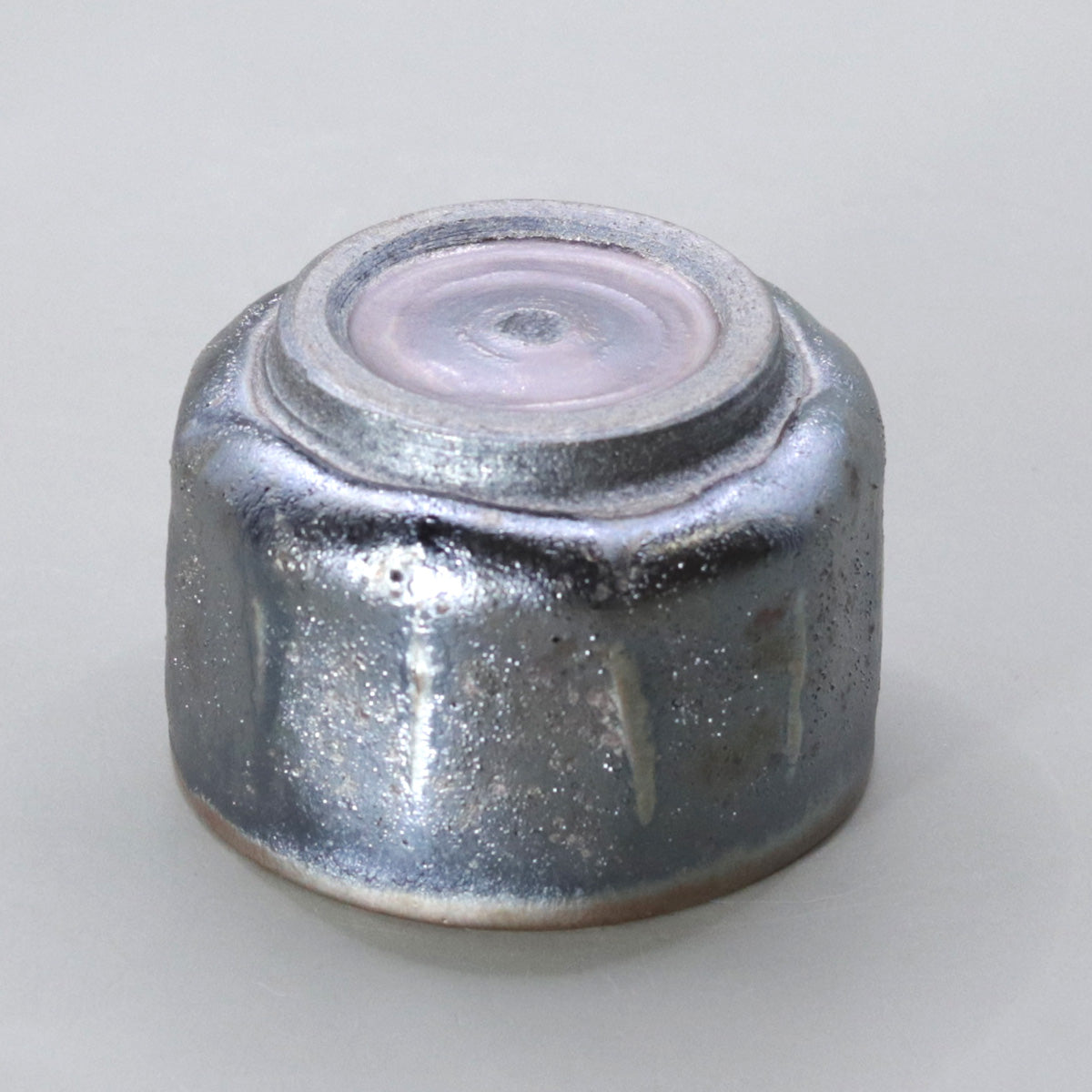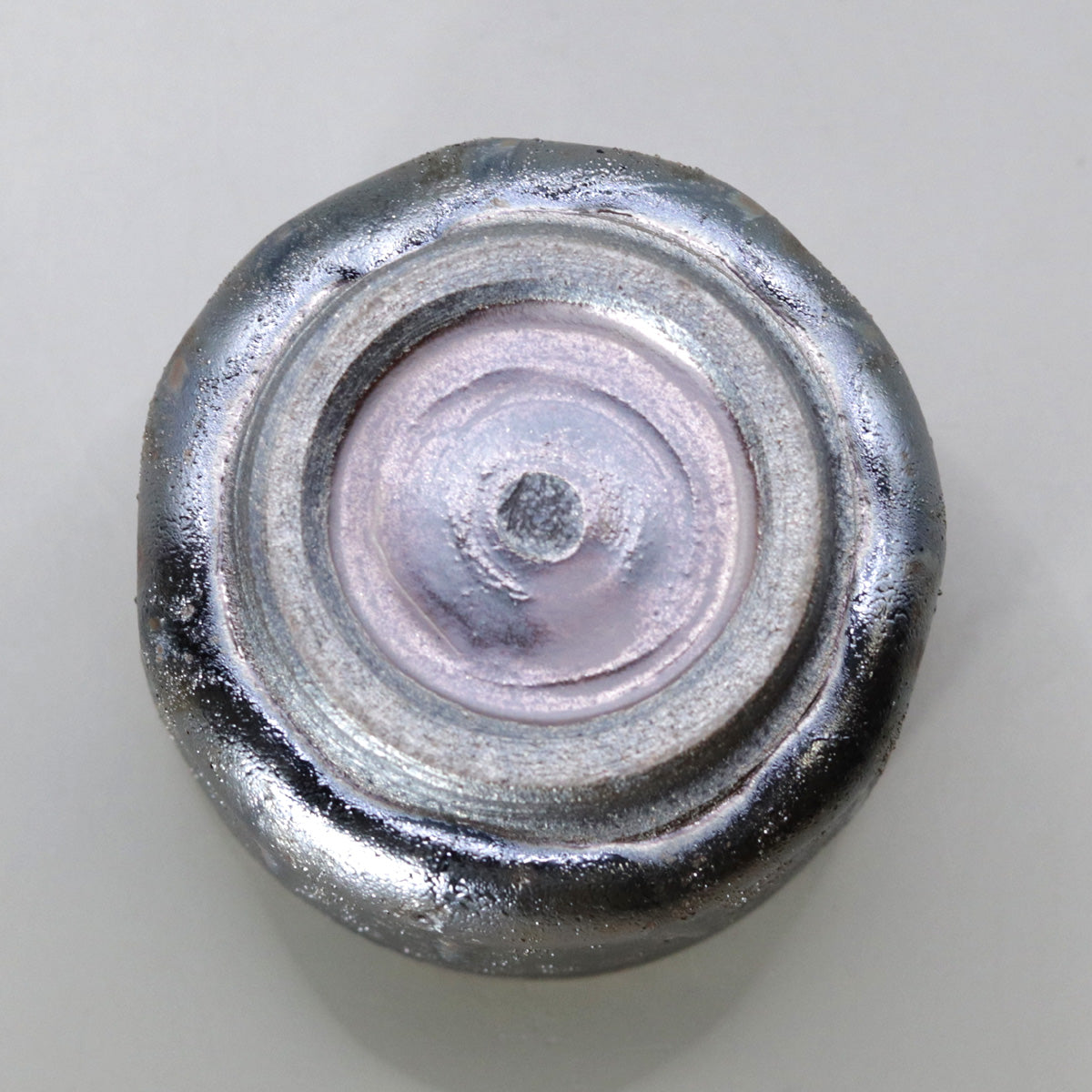Tenmoku glaze sake cup by Okada Yu
Tenmoku glaze sake cup by Okada Yu
Couldn't load pickup availability
Width: 7.0cm Height: 5.0cm
Tenmoku glaze sake cup
-- Created by Masaru Okada --
Work summary
This is a Tenmoku-glazed sake cup made by Okada Masaru, who has his own kiln in Tanzan, Uji, Kyoto. It has a relatively low cylindrical shape, and the ridges on the bottom of the body create a rhythm in the silent darkness. The indigo-black glaze is riddled with tiny iron crystals like silver sand, and depending on how the light hits it, the blue-purple and dull gold colors shimmer, creating a landscape reminiscent of nebulae in the night sky. The rim is tinged with a faint scarlet, exuding a touch of warmth in the cold universe.
Glaze and technique
Trace amounts of cobalt oxide and manganese oxide are used in combination with the iron feldspar-based Tenmoku glaze to give the black glaze a deep indigo blue color and purple-gray luster.
Fluctuation firing : After the black color is fixed by the primary reduction, Okada's unique method of alternating between reduction and weak oxidation causes oil-droplet-shaped iron crystals to steadily precipitate on the surface.
Scarlet-colored finish : The amount of oxygen is increased slightly towards the end of the process, causing the iron around the rim to oxidize and form a thin purple-brown film. The contrast with the black glaze softens and accentuates the contours of the vessel.
Glaze surface : Satin-like semi-gloss. From a distance it looks matte, but up close you can see a metallic glow and enjoy the multi-layered texture.
Historical and cultural background
Tenmoku glaze has its roots in the black-glazed bowls of Jian kilns in Fujian Province during the Song dynasty, and is said to have been brought to Japan by Zen monks during the Kamakura period. Vessels on which accidental crystals such as oil droplets and Yohen appear are highly valued as "the wonder of kiln transformation" and have been highly praised in the world of tea ceremony. The technique of shining is a simple decoration that is also found in Joseon Kohiki and Hagi ware, and is a Japanese arrangement that highlights the contrast between the base and the glaze. The highlight of this work is the fusion of these two traditions, sublimating them into a modern indigo steel color.
Okada Masaru believes in "transforming the randomness of earth and fire into inevitability," and has earned high acclaim for his works that combine the flickering of flame with advanced chemical control.
Aesthetic intent and spirituality
The vertical rhythm of the ridges visualizes the Zen breathing technique of "Chosoku," while the oil droplets scattered in the indigo-colored darkness suggest the infinity of "Yoruiro Mujin." Every time the cup is tilted, light crosses the ridges, the liquid surface shimmers like a nebula, and at the moment of sipping, the scarlet rim faintly appears, quietly speaking to the lingering aftertaste of "a once-in-a-lifetime encounter."
How to use and points to note
Suitable for chilled and room temperature sake : The cylindrical shape retains the aroma just right, bringing out the delicate aroma of ginjo sake.
Changes in light source : Daylight LED highlights the metallic glow of the blue steel, while incandescent light makes the oil droplets glow a soft silver-gray. Enjoy the various expressions by changing the lighting.
Pleasure in the hand : The convex ridges provide a natural grip for the fingers, making it non-slip and giving a sense of security.
This sake cup, with its silver-gray stardust twinkling in the deep indigo steel darkness, is the culmination of the "controlled coincidence" that Masaru Okada has been pursuing for many years. We hope you will enjoy a tranquil moment at the sake party while savoring the infinite universe woven by light and sake in the palm of your hand.
Share








Multi-Column
-
[I will send it to you quickly and carefully]
We carefully package each product in a way that suits it best.
Also, delivery times vary depending on the piece (vessel, etc.).
Items that already come with a box will be shipped within 1-3 days of the order date.
For items that require a box to be made after your order, it will take approximately 30 days for production to be completed and then shipped.
In either case, once we have confirmed your order, we will contact you by email to inform you of the delivery date.
-
[Requests when purchasing pottery]
Even products that look the same may differ slightly in color, shape, size, etc.
The way the glaze is used, the power of the kiln, the firing method, the season, and the humidity also affect the appearance of the pottery.
Please understand the individuality of each piece of pottery and enjoy the unique warmth of handmade.

